
Fixing the myriad ills confronting urban areas requires fresh and creative ideas. Leading thinkers weigh in with prescriptions for a vibrant future.
America’s spirit has long been reflected in its cities. Big, bold, and at times unruly, our cities are a projection of the nation’s grandest ideals, offering diverse options and opportunities for people seeking something new or something more. But in recent decades, many find the promise has shifted, and optimism is flagging. While jobs tend to pay better in cities than in less populous areas, earning the median income—let alone less—may not be enough to find a quality place to live in many urban centers. Public transit is less dependable than driving, an effect of long-neglected infrastructure planning and spending.
The fault lines that have always been there have deepened. And the COVID-19 pandemic made the economic and racial disparities in cities impossible to ignore. Civil unrest after the murder of George Floyd and searing images of looting in well-heeled downtown neighborhoods last summer seemed like a tipping point. Indeed, the COVID-19 safety measures that had already emptied downtowns and decimated transit ridership intensified impressions of a growing urban dystopia.
The reality is urban residents have shown astonishing creativity and resilience during this unsettling time. In the face of stay-home and physical distancing orders, cities sustained public life by creating walk-and-play streets and permitting outdoor dining decks in former parking spots.
As America reopens more broadly, the moment is perfect for fresh, sustainable ideas that tackle long standing barriers and inequities, with results that can benefit everyone. While the 100 biggest cities are home to only about 20% of Americans, the innovation and ideas fostered in these places have an outsized influence. Those who don’t live in the largest urban centers are affected by them: People seeking jobs, culture, and rich histories are drawn there. Their vibrancy is a bellwether for the nation’s well-being. The next chapter for American cities is wide open.
REALTOR® Magazine has assembled a panel of leading thinkers, planners, advocates, and officials committed to a vital and sustainable future for cities. Read on for their stimulating ideas and prescriptions.
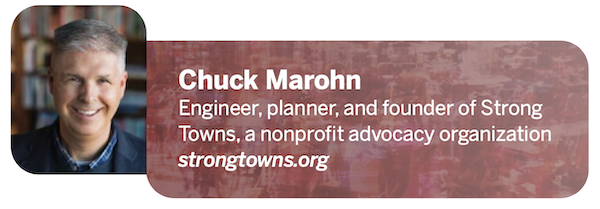
Building Organic Cities
Hemingway said, “Bankruptcy happens gradually and then suddenly,” right? Well, the pandemic has felt to me like that sudden shift that’s going to wake cities to the need to change the way they look at development. When you study civilizations of the past, you see they’re actually organic systems. Yet, very few parts of the North American development pattern exhibit organic behavior. We build cities with a physics mindset. Everything about the way we build says permanence—from the way we finance and zone and regulate to the actual physical construction of the buildings, which are not designed to be modified or retrofitted easily.
In 2008, I was running my own planning and engineering company. The economy was imploding and I was very frustrated because, for years, I had been trying to work with cities to help them grasp the long-term financial implications of the infrastructure projects they were doing. New development—whether it’s funded by a developer, a federal government program, or taking on debt—gives the local government this sugar high of cash flow. The liabilities come a generation later as the city tries to cover the long-term operations, maintenance, and replacement costs. Cities can’t tax their way out of it.
The goal of Strong Towns is to help cities understand the relationship between their prosperity and their development pattern. We advise city officials to orient around what’s going on at the block level, as opposed to what the next state program is or what the next federal infrastructure bill says or what subsidy the next developer coming into the community can latch onto. When we focus at the block level, what we recognize is that there are struggles that we can address very simply and create a lot of momentum in doing so.
We’ve created a four-step process that cities can use to make financially high-returning investments. First, go out and observe where people struggle. Second, ask yourself: What is the smallest thing we could do to address that struggle? Third, do that thing. Don’t take five years to get a grant and initiate a huge project. Just do it. And fourth, repeat this process. Fix the problem and see how people react. Then, make it a little bit better and see how people react. What we’re seeing in that approach is a reintroduction of organic responsiveness.
No savior is going to fix the issues and make your city more livable. You need to build groups of people to start doing what you can to make the things in front of you a little bit better. Keep growing that circle of connections, and soon you can start to affect city policy and decisions that are being made. It’s a bottom-up approach.

On Board With Transit
The pandemic laid bare the inequality that decades of misplaced transportation and development policies have created in our cities. Nowhere did that play out more glaringly than on our public transit systems. We saw overall transit ridership fall with the need for social distancing and office workers avoiding the commute while working remotely. But the “essential workers” keeping our grocery stores, hospitals, and other services running never stopped riding. Unable to work from home, they reaffirmed the great importance of transit as a tool to keep society going. Transit proved itself to be a lifesaving service that allows all of us to live our lives.
I don’t believe the hype that cities—and by extension, transit—are “over.” If housing prices are any indication, demand remains strong in the densest neighborhoods in communities nationwide. People are going back to the office and congestion is returning, and with it the needs and desires that cause people to use, and support investment in, transit. Even in the heart of the pandemic, voters across the country last November passed 15 of 18 transit measures. Austin, Texas—traditionally not a leader in transit use—voted by large margins to approve a $7 billion investment in transit and $460 million for new sidewalks, bikeways, and street repairs.
Local governments that are investing in high-capacity transit need to acquire property in proximity to transit stops and pursue partnerships to create mixed-use, walkable developments with high levels of deeply subsidized housing, especially in areas that have become off-limits to low-wage earners.
Unfortunately, the real estate system historically played a large role in advancing segregation and inequality, by promoting the concept that there are places that are desirable and that are not. That has allowed people in some communities to profit and left others behind. By helping to create mixed-use, mixed-income neighborhoods near transit and supporting the polices and funding to get them done—like higher property taxes, imposed progressively—the real estate community can be a critical part of the solution.
The major urban story of the last decade is that our most economically productive cities became increasingly unaffordable and more and more inaccessible to all but the affluent. The next decade’s narrative should be about the dramatic steps cities took to undo that legacy.
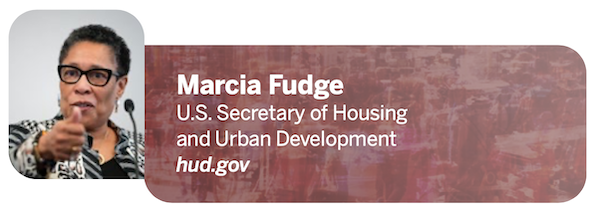
Tackling Infrastructure and Housing
If we want the United States to remain the greatest nation in the world, then we must first take care of home—in the most literal sense. President Joe Biden’s American Jobs Plan would do just that. It would address our crumbling bridges, buildings, and homes. It confronts the affordable housing crisis that threatens the security and the dignity of people across the country by expanding access to affordable housing.
Even before the pandemic, nearly 11 million Americans spent more than half of their incomes on rent. COVID-19 has only made this situation worse, especially for communities of color and people of modest means. As America rebuilds from the pandemic, we need to work toward making our communities more prosperous, equitable, and resilient in the decades to come. This includes addressing our housing crisis head on in cities, rural communities, tribal nations, and the like.
Access to affordable housing is a major barrier to ensuring inclusive communities. I applaud President Biden for putting forth the American Jobs Plan, which would preserve the affordable housing we already have and invest $213 billion to build and modernize more than 2 million affordable and sustainable places to live.
The past year has reminded us just how important it is to have a safe, stable place to call home. Our home can connect us to better jobs, our children with good schools, and our communities with cleaner air and cleaner water. To put it simply, our homes serve as a bridge to greater opportunities and a better life.
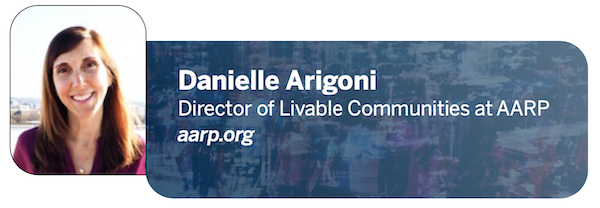
An Age-friendly Lens
Cities of the future need to be age-friendly places. Some are doing that well now, but there’s a long way to go. Our current housing stock doesn’t match who we are demographically or where we’re going. More than 50% of households are comprised of just one or two people, but 85% of our housing stock is two, three, or four or more bedrooms.
Think about mobility. Walkability is where cities have an advantage over other areas. We know that older adults outlive their ability to drive by seven to 10 years. There is more promise for the future in fixing pedestrian infrastructure and making it possible for people to walk to destinations more easily. Better street design and well-lit crosswalks visible to drivers are things communities can be doing. It doesn’t have to be platinum-level infrastructure changes. Even basic changes, like longer signal timings, make a difference. They help older adults, but they benefit everyone. And in specific aspects of public transit, cities that are doing well think about the seating and shade at bus stops.
We need more flexibility to accommodate the future. The rigidity of our rules and codes right now is not getting us where we need to be. We need to move fast because 2034 is the year when we’ll have more people over 65 than under 18 for the first time ever. That’s just 13 years from now.
One way to adapt is to unlock the potential of accessory dwelling units to meet community and housing needs. Building an ADU or converting a coach house in the backyard means it can be an income generator for the owner, and it means a friend, family, or renter is nearby, which reduces the sense of isolation and can be helpful for caregiving. We’ve all lived through this period of isolation, and many older adults felt that before the pandemic.
Some municipalities still have requirements that you can’t have three nonrelated adults living together. That was to prevent party houses in college towns but it doesn’t allow for the Golden Girls model, which we at AARP see as the gold standard. We’re trying to take down policies that get in the way of older adults living in their communities for their lifetimes.
The demand for safe outdoor spaces to exercise and congregate has rocketed. The pandemic has shown us the importance of public spaces. The cities that think about design of the parks, plazas, and even parking spaces in terms of people with differing abilities and how to be inclusive, they are the places that will lead the kind of rebound we hope for.
Still, barriers to change remain. For too long, the focus has been, “If we can attract the millennials, we’re good. ”Our vantage point is that we cannot support older adults to live their best lives if we’re not also working with local and state governments to create livable communities for all.

Stirrings of “Cultural Kitchens”
When I reflect on the lessons from 2020, what I fear most is the nostalgic snapback to pre-pandemic conditions that were anything but rosy, especially for those of us who are black and brown. The pandemic and the murder of George Floyd forced us to look at long-standing, stark economic inequality and the racialized dehumanization that have harmed too many of us. We are compelled to ask ourselves, “What will we do?”
Learn how 15-Minute Neighborhoods enable urban residents to meet all their needs locally in the latest issue of On Common Ground Magazine.
This season of reckoning has forced us into a space of imagination and creativity—after all, that is how human beings adapt to exigent circumstances. As cities look to the future, imagination and creativity will be crucial in order to thrive. Where best to find those crucial resources than in arts and culture? These modes of human expression help us question the world, explain our conditions, and act in new ways. They help us make sense of our circumstances, dream, imagine, celebrate, mourn, transform, and even heal.
Rather than merely “recover” to a time when so many were shut out and suffering, can we enlist artists and cultural practitioners to help us reframe the issues we must address? To retool the policies and practices we employ? To repair the harm so many are experiencing? Reframing is often critical to meaningful change. It requires truth-telling: looking at issues from different vantage points and getting to root causes. An issue reframed may suggest retooling—working differently and looking upstream to policy levers that could stop perpetuating harm.
Repair requires acknowledging harm, reclaiming our humanity, and taking control of our own narratives with accountability to those who came before us as well as future generations. For historically marginalized groups, this is often an important part of how we develop individual and collective agency and power. Around the country, vital work is happening in what I call “cultural kitchens”: organizations working on collective uplift that start by viewing culture as an asset; giving attention to community aesthetics and stories; and helping us unlearn and undo the impacts of oppression, assimilation, and cultural erasure. A few examples: Self-Help Graphics in East Los Angeles, Village of Arts and Humanities in Philadelphia, Ashe’ Cultural Arts Center in New Orleans, Juxtaposition Arts in Minneapolis, the Wing Luke Museum in Seattle, and La Mujer Obrera in El Paso, Texas.
As we look ahead, I am hopeful but not naive. In the wake of inequity exposed by COVID-19, the George Floyd murder, and other abuses of power, there have been untold numbers of proclamations in favor of deep change. Now is the time to act on those proclamations, ethically, with imagination, resolve, and resources. Now is the time to write a new chapter in our collective story.
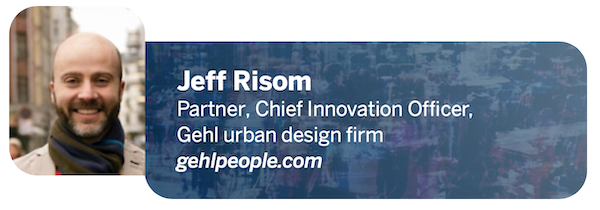
Welcome to the “Circular Neighborhood”
In a world where people can work from anywhere, how will cities attract and hold onto talent and resources? By having great neighborhoods with the best amenities: high-quality public spaces and parks, great schools, and thriving cultural centers. Welcome to the Neighborhood Renaissance.
Post-pandemic, surveys are finding that most workers plan on a 3-day/2-day split between office and home. For generations we’ve spent more time in the area where our office is than at home in our neighborhood. When that flips permanently, it will have huge impacts on not only real estate prices and consumption patterns, but also our social networks and culture.
One consequence might be the creation of a new type of real estate. I call it the “fourth place.” Traditionally, hangout spaces like coffee shops have been referred to as the “third place,” after home and work. The fourth place might be a flexible, hybrid space that’s designed for multiple functions: work, such as video meetings and conferences, during the day, and a restau- rant in the evening, while being flexible over time for residential, service, or retail use.
For real estate, this type of multiuse might mean that the same square feet could be rented to multiple tenants simultaneously. These spaces could respond to changes in the market faster than other building types.
This approach could deliver on the economic concept of circularity: designing out waste and reusing and regenerating where possible. A “circular neighborhood” would be full of buildings offering various combinations of the home, work, third-, and fourth-place functions. Round-the-clock use of buildings and infrastructure could dramatically reduce the materials and energy needed to comfortably sustain communities.
The future of cities will be a hot topic Sept. 27–29 at the inaugural C5 Summit, NAR’s commercial real estate gathering in New York, where key commercial players will converge for learning, networking, and dealmaking.
It could also promote stronger social ties. Imagine a neighborhood with multiple housing types and tenure (rent, co-op, own, etc.), with numerous multiuse buildings. The “school building” might also house public kitchens and serve as a space for community meetings, recreation, and cultural programs that strengthen the bonds among neighbors. Myriad challenges exist, such as how insurance and liability might work in such a building. But the technology exists to smooth the transition, and the potential payoff economically, environmentally, and socially is enormous.
Increasingly, the energy to power these circular neighborhoods is likely to come not from huge coal power plants or along cross-continental gas pipelines vulnerable to cyberattack, but from within the neighborhood itself. Advances in localized battery technology and solar and windmill generation are growing exponentially. The Danish company Seaborg has created a compact “molten salt reactor,” housed on a barge no larger than a football field, that can safely generate enough electricity to power 200,000 homes, pollution free. Any way you look at it, the coming renaissance means more power to, and within, neighborhoods!

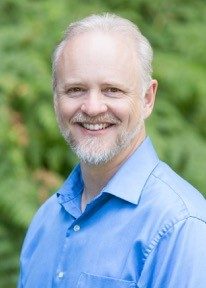

No comments:
Post a Comment